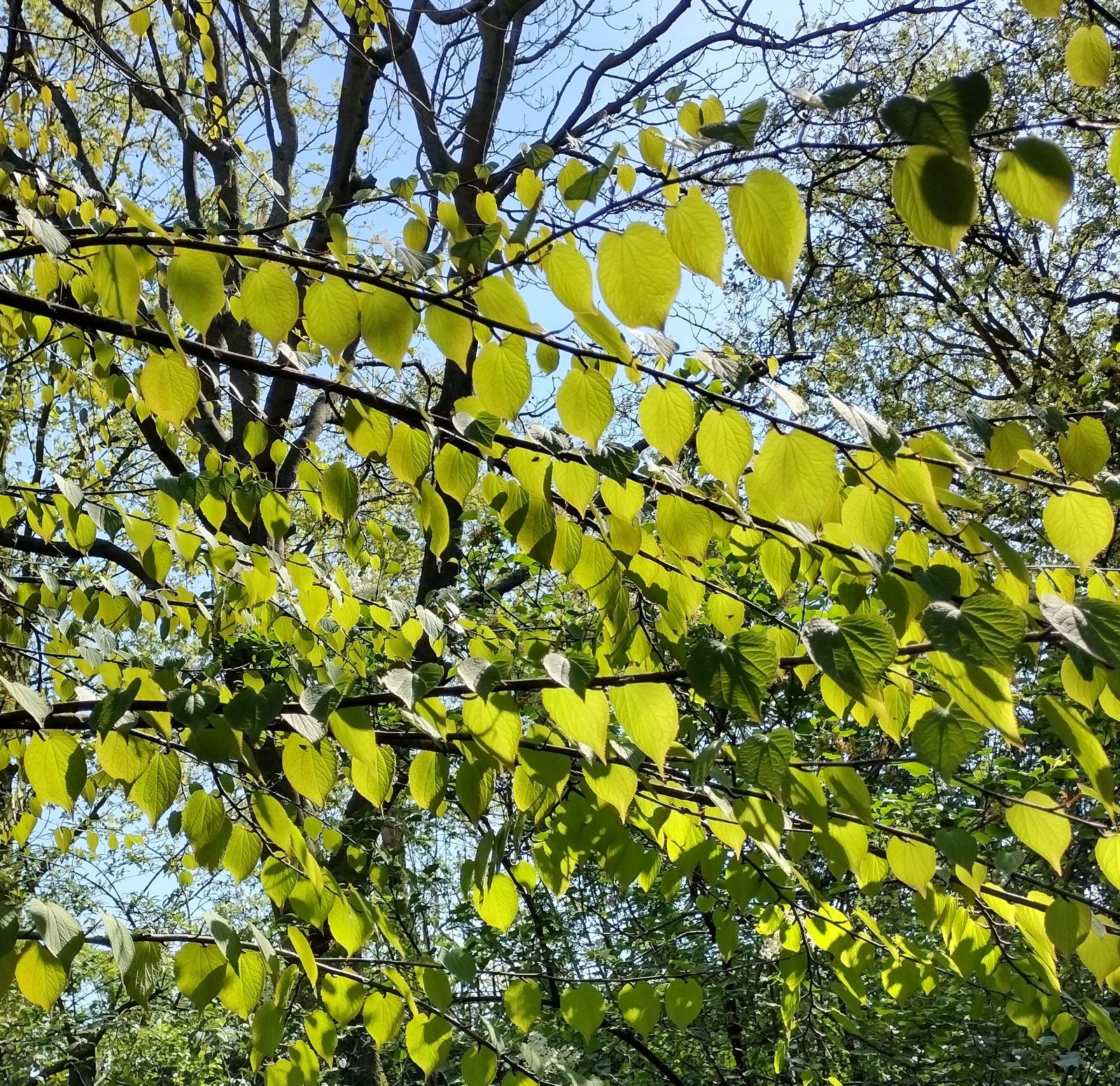Tetracentron
Sponsor
Kindly sponsored by
Fonden for Træer og Miljø, The Danish Foundation for Trees and Environment
Credits
Sven Bronckaers & Richard Moore (2024)
Recommended citation
Bronckaers, S. & Moore, R. (2024), 'Tetracentron' from the website Trees and Shrubs Online (treesandshrubsonline.
Family
- Trochodendraceae
A genus containing a single species; for a full description see Tetracentron sinense Oliv.
Tetracentron is a monospecific genus with a single living species, T. sinense Oliv., native to China, northern Vietnam, northern Myanmar and extending as far west as eastern Nepal. This tree first became known to the west when in the mid-1880s Augustine Henry discovered and made numerous herbarium collections of the species whilst in Hubei, China, which were later described by botanist Daniel Oliver in 1889 (Oliver 1889). The name Tetracentron derives from the Greek words “tetra”, meaning four, and and “kentron” meaning pointed or spur, refering to the four projections on the fruits (Missouri Botanical Garden 2022).
Tetracentron was once placed in its own family, Tetracentraceae, but now shares rank with its closest living relative Trochodendron (Wheel Tree) in the family Trochodendraceae, containing only these two monospecific genera. Both are considered to be relict, primitive genera, having survived virtually unchanged since the early Tertiary and are estimated to have diverged from each other around 52 Mya (Li et al. 2021); they are therefore placed amongst the basal eudicots. Fossils show that there are several extinct species of both Tetracentron and Trochodendron in addition to a number of other extinct genera which are believed to have belonged to the same family; fossil evidence of this has been found across North America and Eurasia, dating from the Early Cretaceous. Fossils of Tetracentron in particular have been found in Japan and Iceland dating to the Miocene; Kamchatka from the Paleocene; and western North America dating back to the Middle Eocene (Ozaki 1987; Manchester et al. 1991; Grimsson et al. 2008; Lin & Chiu 2018; Manchester et al. 2021). During the cooling climate of the Tertiary the range of the Trochodendraceae was reduced drastically, probably only escaping extinction in the refugia of deep valleys in southwest China together with better known relicts such as Metasequoia and Ginkgo, but, compared to these, Tetracentron appears to have been more successful in repopulating parts of its former range (Rix & Crane 2007).
It is interesting to note that there are indications that Tetracentron and Trochodendron occurred together in the same geographic region in Idaho in the Middle Miocene, and that the extant Trochodendraceae in Asia don’t have any geographic overlap. It seems likely that the single extant Trochodendron adapted to a somewhat warmer climate with greater oceanic influence, while Tetracentron is found in mixed mesophytic forests at higher altitudes (Manchester & Iju 2006).
Although these two genera are quite morphologically distinct from each other in regards to their foliage, flowers, habit and form, they have one important character in common: their unique wood structure. It was once thought that both Tetracentron and Trochodendron lacked vessel elements, instead relying on tracheids for water transport, a feature most commonly associated with gymnosperms; however, recent research has revealed that in addition to tracheary elements, primitive vessel elements are also present in the secondary xylem of both genera supporting their evolutionary position as basal eudicots (Ren et al. 2007; Li et al. 2011). One other superficial similarity between Teteracentron and Trochodendron is the shape and size of the seeds as presented in the image provided here: Tetracentron and Trochodendron seed comparison (R. Moore pers. obs.); however, as reported by Doweld 1998 there a number of anatomical differences between the two. Upon being discovered, Tetracentron was placed alongside Trochodendron and Drimys in the Magnoliaceae, within tribe Trochodendreae due to their primitive wood structures following which the taxonomic classification of these genera remained in disagreement with numerous revisions being made until more recent molecular analysis could be carried out (Smith 1945). Recent phylogenetic evidence shows that Tetracentron and Trochodendron form a strongly supported monophyletic clade (Chen et al. 2007) and since the publication of the APG III have been classified together within their own order the Trochodendrales, beside orders Proteales and Buxales within the early diverging eudicots (APG III 2009; APG IV 2016).

